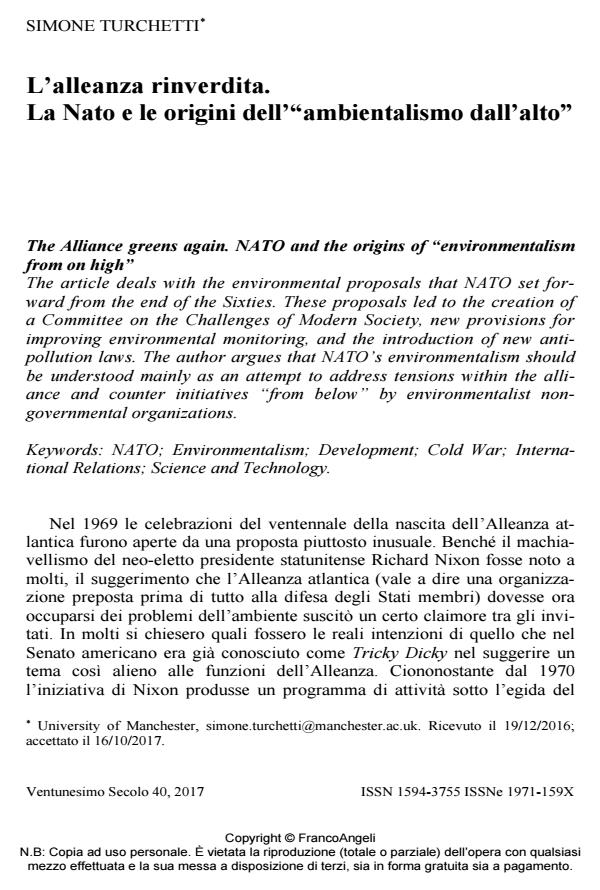The Alliance greens again. NATO and the origins of "environmentalism from on high"
Journal title VENTUNESIMO SECOLO
Author/s Simone Turchetti
Publishing Year 2017 Issue 2017/40
Language Italian Pages 17 P. 84-100 File size 206 KB
DOI 10.3280/XXI2017-040006
DOI is like a bar code for intellectual property: to have more infomation
click here
Below, you can see the article first page
If you want to buy this article in PDF format, you can do it, following the instructions to buy download credits

FrancoAngeli is member of Publishers International Linking Association, Inc (PILA), a not-for-profit association which run the CrossRef service enabling links to and from online scholarly content.
The article deals with the environmental proposals that NATO set forward from the end of the Sixties. These proposals led to the creation of a Committee on the Challenges of Modern Society, new provisions for improving environmental monitoring, and the introduction of new antipollution laws. The author argues that NATO’s environmentalism should be understood mainly as an attempt to address tensions within the alliance and counter initiatives "from below" by environmentalist nongov ernmental organizations.
Keywords: NATO; Environmentalism; Development; Cold War; International Relations; Science and Technology.
Simone Turchetti, L’alleanza rinverdita. La Nato e le origini dell’"ambientalismo dall’alto" in "VENTUNESIMO SECOLO" 40/2017, pp 84-100, DOI: 10.3280/XXI2017-040006